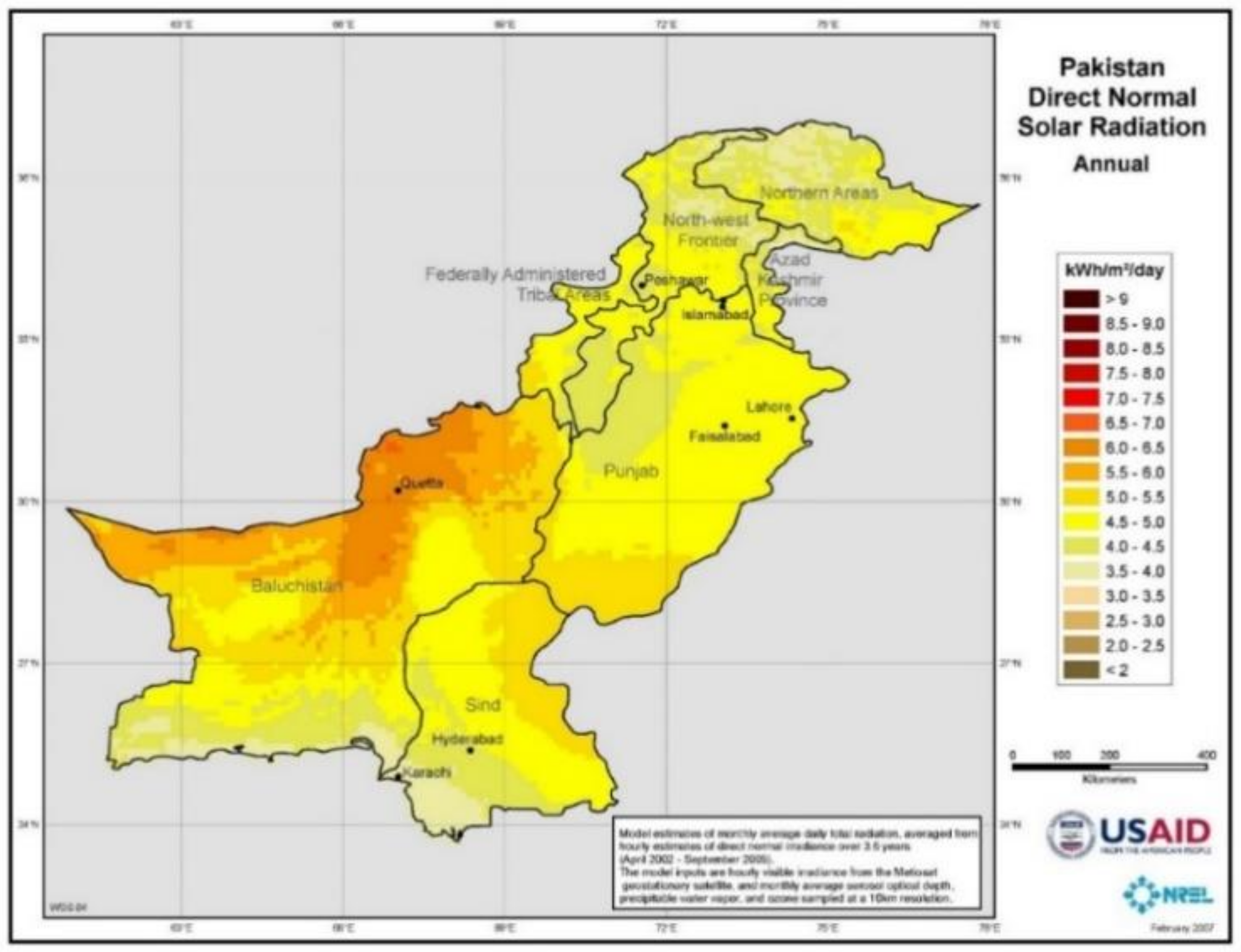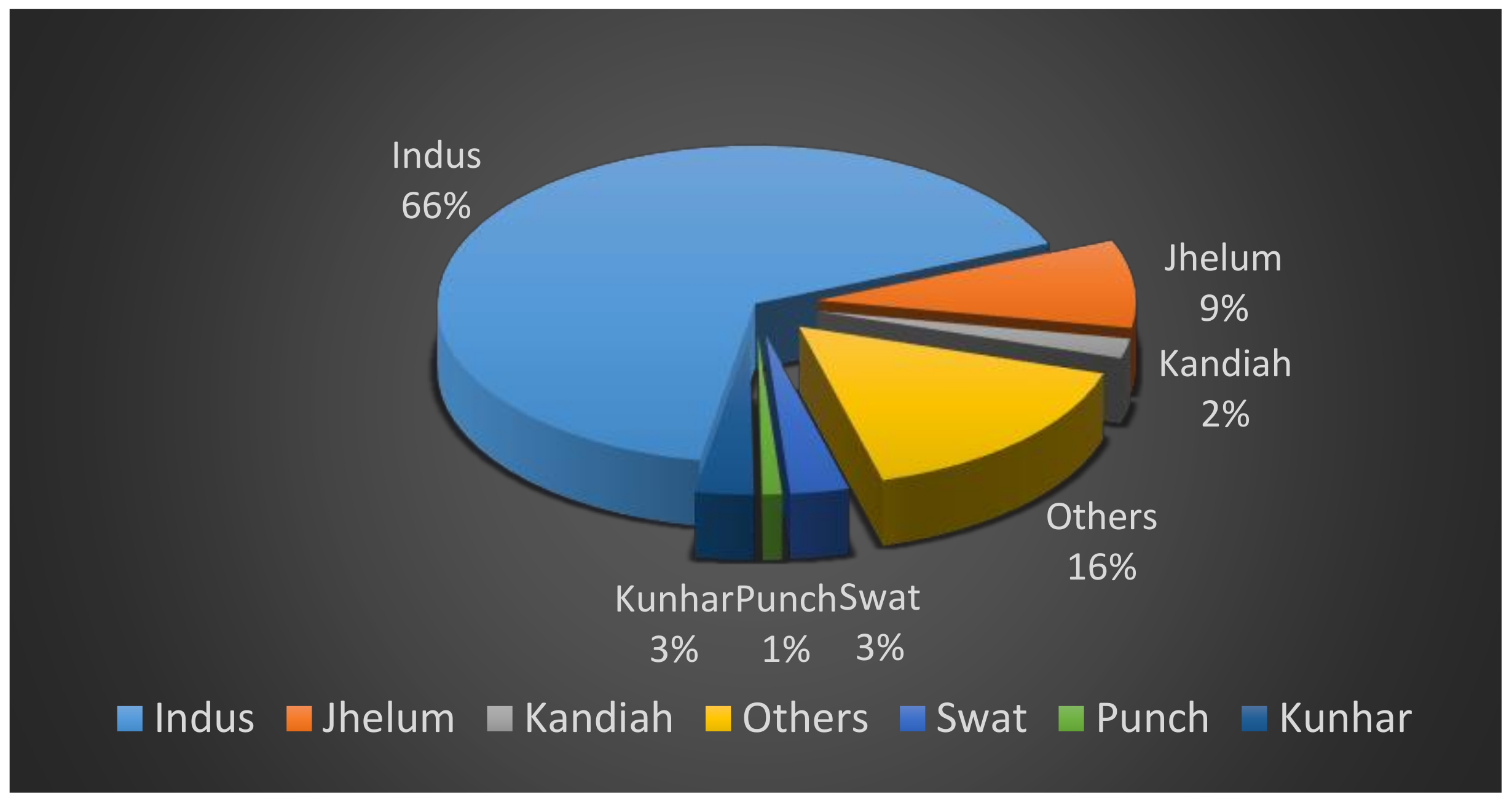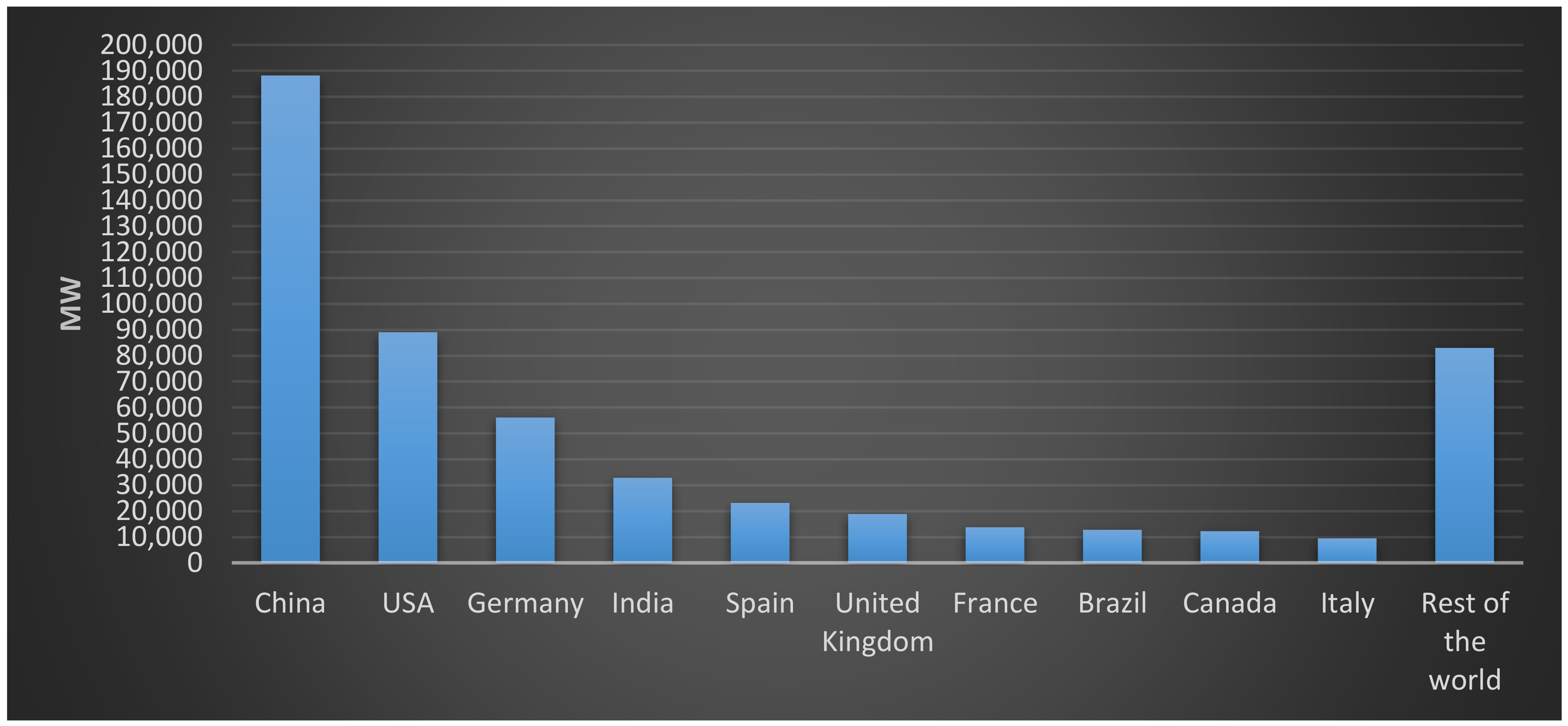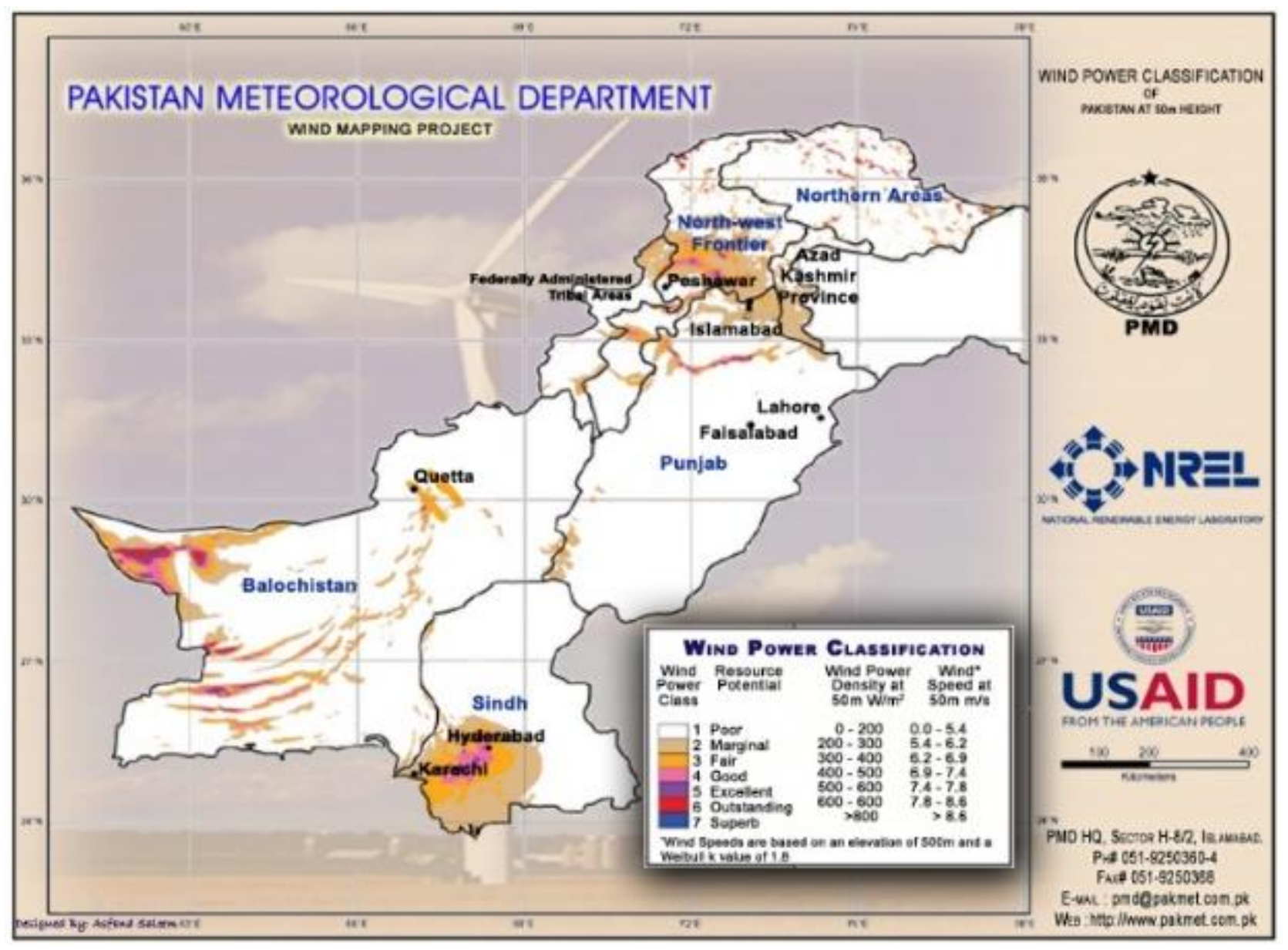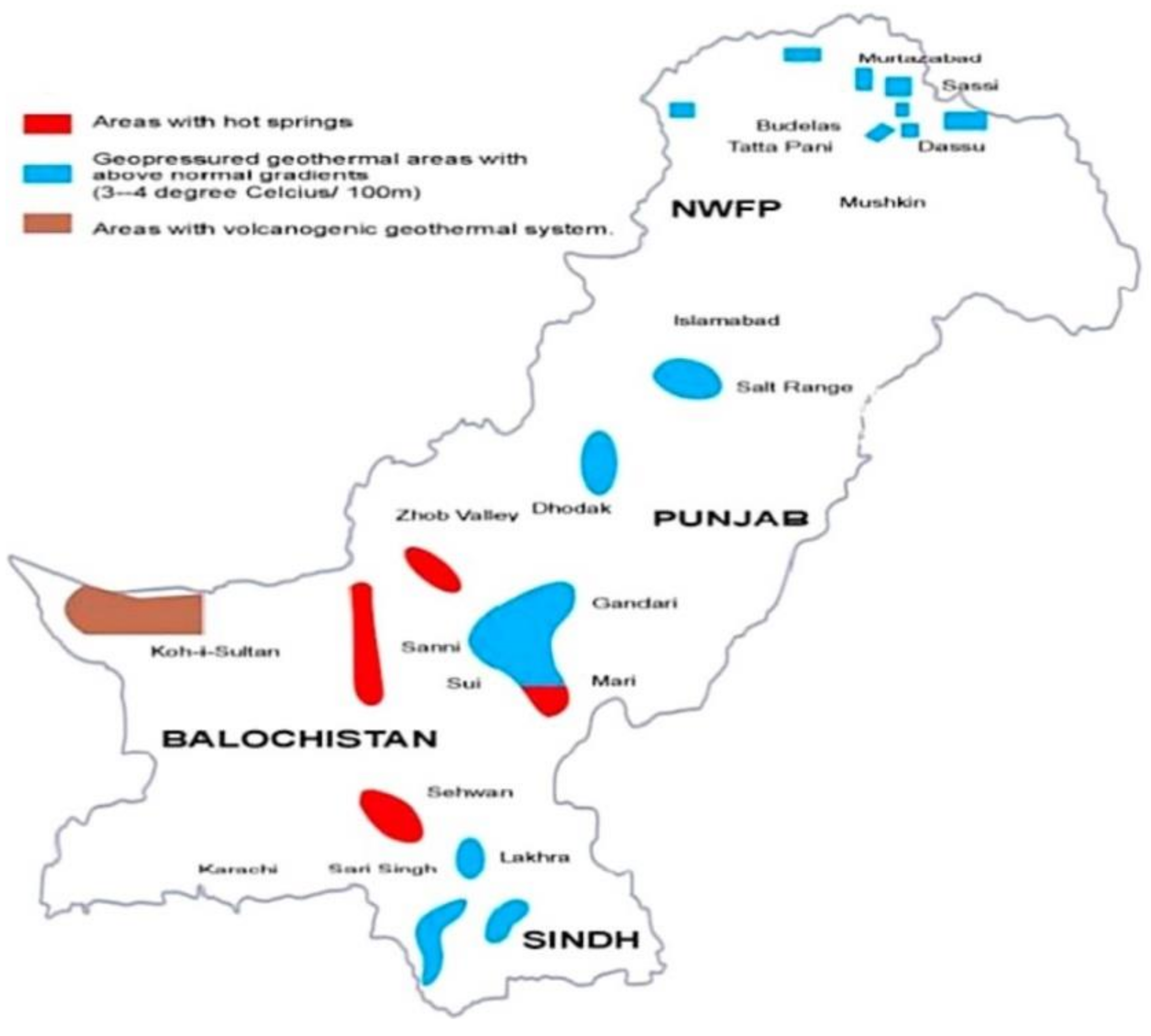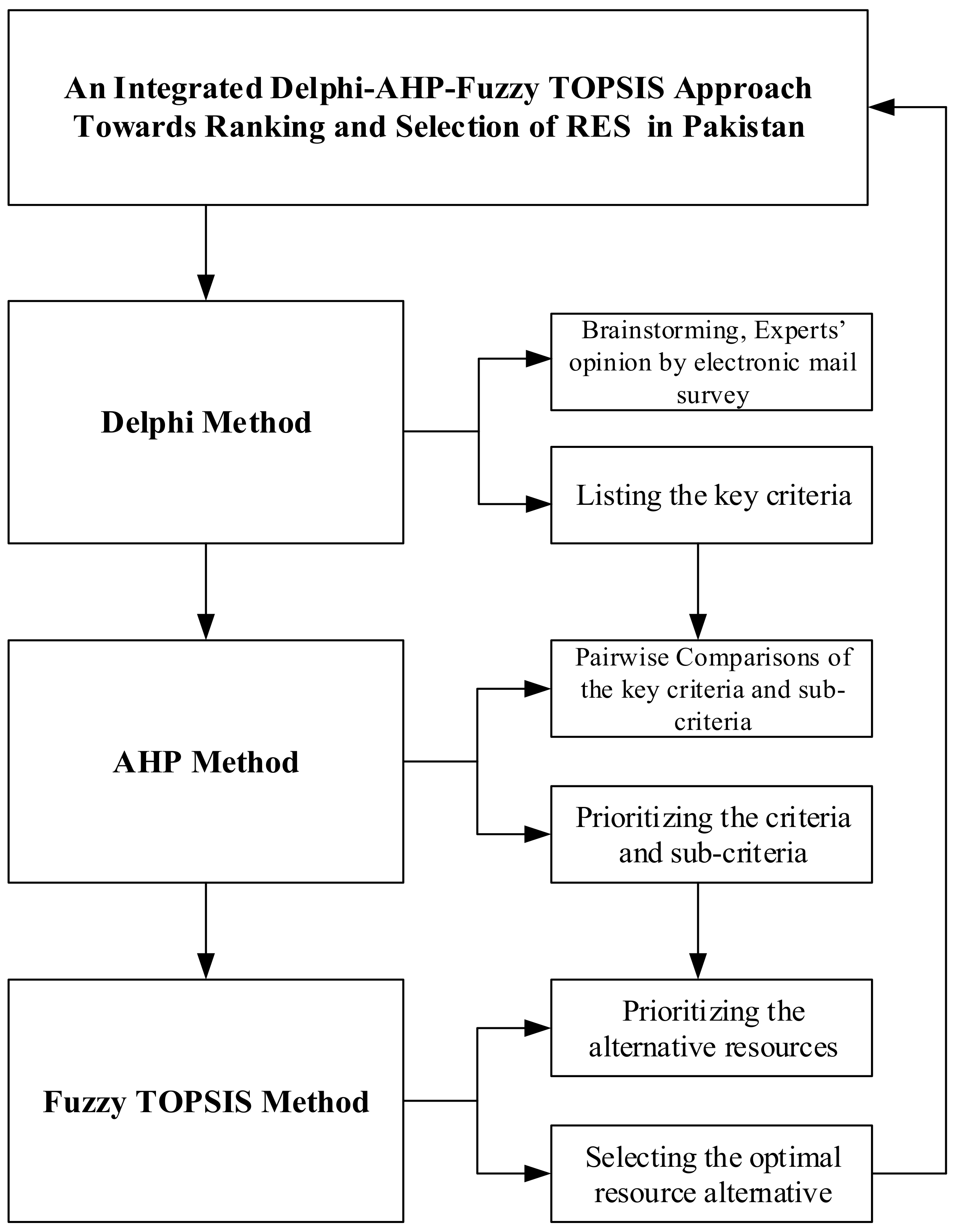1. Introduction
Energy is one of the key drivers for sustainable growth and economy of any country. In fact, in this era, the measure of the development of any economy is synonymous with the level of energy consumption. Energy, which is crucial in economic, environmental, technical, and socio-political aspects, has become one of the most discussed issues in recent times. Industrialization and technological developments have created a higher energy need worldwide [
1]. However, the quantity of reserves of fossil fuels differs from one country to another. This situation has, therefore, resulted in an unavoidable economic dependency, major environmental concerns, technological issues, important social consequences, and serious political conflicts [
2]. The existing situation and the future estimations for energy requirements make it crucial to explore alternate energy resources. Further, the current and future possible economic, environmental, technical, and socio-political consequences also push countries toward renewable energy (RE) resources. In this scenario, RE has become the answer to sustainable energy planning.
Pakistan is a developing country with striving economic progress and thus essentially requires a sufficient amount of energy for meeting the growth targets and attaining sustainable development. However, in the last two decades, the country has been coping with its worst ever energy crises, with regular power interruptions that have deteriorated the economy, thus adversely impacting the livelihood of people [
3]. The ongoing energy crises in the country have paralyzed the economy, and the circular debt of the power sector alone has crossed over Pak Rupees 922 billion [
4]. It is also unfortunate that only around 50% of the country population has access to on-grid electricity. Load shedding of 16–18 h in the rural areas is a common phenomenon while in the urban areas, the electricity is inaccessible for 10–12 h a day [
5]. This huge shortfall of electricity is mainly owing to Pakistan’s reliance on fossil fuels, which are a key source of huge import bills and expensive electricity. Apart from these issues, there are also various governance-related problems and hurdles behind these crises. Amongst these all, a lack of focus toward harnessing the indigenous RE resources is a noteworthy shortcoming that has not received any major attention in the planning and development processes in Pakistan. In order to eliminate energy shortfalls, it is required that abundantly available renewable resources be harnessed effectively [
6]. Pakistan is fortunate to have various RE resources that include solar, hydro, biomass, wind, and geothermal energy [
7]. All these RE resources have huge potential to generate electricity as well as help to eradicate energy deficits and enhance sustainable development of the country.
The total electricity generation capacity of Pakistan in 2017 has been reached to 29,944 MW [
8]. Shares in electricity generation are comprised of natural gas, 33.6%, oil, 32.1%, coal, 0.2%, hydropower, 26.1%, nuclear, 5.7%, and renewable energy, only 2.2%. In the total energy mix of Pakistan, the share of non-renewable is, as such, higher and needs to be reduced in order to ensure long-term sustainability and energy security. In the wake of the global focus on reducing greenhouse gas (GHG) emissions and thus enhanced effort for the deployment of RE-based projects for electricity generation, Pakistan also needs to undertake essential measures toward development and completion of RE-based power projects. However, so far, no significant accomplishment toward harnessing RE-based projects has been witnessed in the country. In this context, serious and extensive energy planning and decision-making efforts are required to exploit RE resources for electricity generation.
RE resources are not only capable of meeting the ever-increasing demand for electricity, but they are also environment-friendly. These facts regarding RE resources are recognized globally, but Pakistan, though blessed with enormous RE potential, is making extremely slow progress in realizing the true potential of RE-based projects. In this context, the Alternative Energy Development Board (AEDB) and the Pakistan Council of Renewable Energy Technologies (PCRET) are two key organizations of the government undertaking RE projects and technology development activities, respectively [
9]. However, the progress of these organizations is very slow and only some small RE-based projects have been installed in the country. The poor level of commitment from government, the overlapping management functions of the energy sector, and the lack of financial capacity and technical awareness are key barriers toward developing RE-based projects in Pakistan. Likewise, Usama et al. [
10] have identified various key barriers that obstruct successful implementation of social sustainability practices in manufacturing firms using interpretive structural modeling (ISM).
It is, therefore, important that, for sustainable development, short-term, middle-term, and long-term energy planning consider various energy resource alternatives. As such, the various RE resources need to be evaluated in a systemic way, and they must be considered from the techno-economic and socio-political point of view. In this context, the aim of this study is to systematically prioritize the RE resources of Pakistan for sustainable energy planning. According to the authors, this is the very first attempt to propose and develop an integrated Delphi-analytical hierarchy process (AHP) and fuzzy technique for order of preference by similarity to ideal solution (F-TOPSIS)-based methodology to undertake systematic prioritization of RE resources of Pakistan. This effort is expected to inspire policy and decision makers to consider a systematic planning process for resource selection to expedite the development of RE-based projects.
The rest of the paper is as follows:
Section 2 presents related literature applied in the energy sector, while
Section 3 provides a detailed analysis of various RE resources of Pakistan. The analysis-based proposed integrated decision framework is shown in
Section 4. The results and relevant discussion are contained in
Section 5, and
Section 6 provides conclusions and recommendations derived from this study.
2. Related Literature
There are various energy planning-related studies where Delphi and Multi-Criteria Decision Making (MCDM) approaches have been comprehensively used with varying aims, objective, and specific criteria. These applications have considered energy planning and policymaking at different levels, risks assessments of long-term energy plans, the selection of the best RE technologies, energy scenario analysis, environmental concerns related to the energy sector, energy management problems, and the selection of power plants. The Delphi and F-TOPSIS methodology has been used to rank flood vulnerability and vulnerability characteristics in the South Han River basin in South Korea [
11]. Some authors [
12,
13,
14] have stated that MCDM approaches are well-suited to address strategic decision-making problems. MCDM methods provide a systemic and transparent way to enclose multiple conflicting objectives. MCDM based on multi-attribute value functions is often employed to support energy planning and policy, and to select and prioritize suitable alternatives. Wang et al. [
15] in a detailed review provided various applications of MCDM methods in sustainable energy planning and concluded that AHP is the most prevailing and popular method.
It is apparent from the literature that MCDM methods are often used and are popular for decision making in sustainable energy planning, and they greatly help in addressing important criteria [
15]. Amer and Daim [
16] used the AHP method to suggest the optimal RE resource in Pakistan. In this study, authors ranked biomass as the best alternative for electricity generation; however, biomass only has a 5000 MW potential, which is not sufficient to meet the increasing energy demand of the country [
17]. Another limitation of this study is that the authors used AHP to obtain the weights of the RE alternatives; however, literature has suggested that the combination or integration of various MCDM methods for one goal provide more refined and better results. Furthermore,
Table 1 illustrates the summary of various energy-related studies from multi-criteria approaches.
In light of the above, this study attempts to contribute to the contemporary literature by proposing an integrated Delphi-AHP and F-TOPSIS methodology for RE resource prioritization. The Delphi approach translates Delphi qualitative assessments about the importance of the criteria into constraints on the weights that are exploited through the AHP approach. Further, the F-TOPSIS method has been employed to finally rank the RE alternatives. The following section described the detailed analysis of various RE resources of Pakistan.
3. Renewable Energy Potential of Pakistan
Pakistan is blessed with various RE resources such as solar, hydro, biomass, wind, and geothermal energy, with significant potential to produce electricity. However, there has been extremely slow growth in harnessing these resources, so they form a mere share in the overall energy mix of the country. The RE policy of 2006 aims at adding 10,000 MW of electricity from RE resources by 2030 [
41]. However, the estimated potential of RE is far greater than 10,000 MW. With growing demand, the maximum potential for RE needs to be tapped.
Table 2 provides a summary of the estimated potential of each RE resource and installed electricity generation capacity from these resources in Pakistan.
It is, therefore, required that government undertake extraordinary measures to explore, develop, and establish sustainable energy sources at the regional and national level to overcome the current energy crisis. In the following sub-sections, detailed analysis of five RE resources of Pakistan for electricity generation is provided.
3.1. Solar Energy
Pakistan has plentiful solar energy throughout the year and across the country [
9]. The solar energy potential of Pakistan is estimated to be 2,900,000 MW, which can be exploited extensively to meet the energy demand. Geographically, Pakistan receives the highest solar radiation in the region with more than 300 sunlight days with around 1800–2200 kWh/m
2 of annual radiation at a 26–28 °C average annual temperature, which can produce an electricity of 5.5–6 kWh/m
2/day [
45]. As such, the exploitable solar resources are estimated to be greater than 50,000 MW, with more than 2500 h of sunlight in a year. There is an excellent potential for deploying solar energy projects in Baluchistan and Sindh, where the sun shines for 7–8 h a day, approximately 2300–2700 h/annum [
9]. A solar map of Pakistan for direct normal radiation is depicted in
Figure 1.
Unfortunately, due to a lack of interest and commitment of concerned government authorities, the development of RE resources including solar energy for generating electricity is at very early stages despite outstanding geographical conditions. In the meantime, with the penetration of solar-based technology in the market, various electricity consumers in both rural and urban areas have installed standalone photovoltaic units of 100–500 W for power generation. However, these individual efforts can be short-lived with an operational maintenance requirement, the availability of spares, and other challenges. With the potential of solar energy duly taken into consideration, and with an annual mean sunlight duration of 8–8.5 h a day, it is projected that around 40,000 villages in the country can be provided with electricity [
47].
The only significant effort by government related to the harnessing of solar energy is the development of the Quaid-e-Azam Solar Power Park underway in the Bahawalpur district of Punjab. At completion, the total installed capacity of this solar project will be 1000 MW [
48]. It is evident from this analysis that the share of solar energy for electricity generation is negligible and requires colossal efforts for the development of the solar energy sector to ensure sustainable supplies to address the demand–supply gap and ensure energy security.
3.2. Hydropower
Pakistan has an enormous resource potential of hydropower, with a suitable amount of water at appropriate terrains to generate electricity [
49]. The northern parts of the country are rich with significant hydropower resources, while few resources are also identified in the southern part of the country. In all, it is estimated that these resources have a potential of 60,000 MW of electricity generation [
50]. As such, Pakistan can sufficiently produce electricity from hydro resources, with only a mere potential exploited so far. About 89% of the potential is yet to be harnessed. The current total installed capacity of the hydropower units of Pakistan is only 6556 MW [
42].
The key hydropower resources identified in the terrain of Hindukush, Himalayas, and the Karakoram ranges include flows from various rivers, namely Indus with a potential of 66% of electricity generation followed by Jhelum, 9%, Swat, 3%, Kunhar, 3%, Kandiah, 2%, Punch, 1%, and others, 16% [
51].
Figure 2 illustrates the total estimated shares of identified hydro resources of major rivers of Pakistan.
At present, hydropower is the most economically viable, environmentally friendly, and cheapest source of electricity in Pakistan. It contributes 26% of the total power generation in Pakistan. The Government of Pakistan (GoP) plans to add 13 hydro projects with a capacity of 20,733 MW by 2023, whereas six projects sites have been identified with the capacity and feasibility of 8650 MW of electricity [
50]. Hydropower is one of the oldest and most mature RE resources in the world. Therefore, considering the huge hydropower potential, the GoP needs to give it top priority and undertake the development of hydro-based projects in the country.
3.3. Biomass Energy
Biomass is a sustainable RE resource and is widely available [
52]. Pakistan is an agricultural country and is the 5th largest sugarcane producer in the world [
48]. The average 50 million tons of sugar yields provides an estimated 10 million tons of bagasse annually from sugar mills. The AEDB has identified the bagasse potential of 1800 MW and the waste-to-power potential of 500 MW with the help of Germany, USA, and Denmark [
49,
53]. As such, the AEDB has begun to install biomass-to-energy power plants of 12 MW, 11 MW, and 9 MW in Punjab and Sindh. However, these initiatives are not sufficient compared to the significant potential of biomass energy of the country.
With around 62% of the population of country living in rural areas, it is estimated that, overall, including bagasse, 5000 MW potential of biomass is available in the country. Both agriculture and animal wastes are readily available in rural areas and are a cheap source that can be used for cooking and heating. Biomass energy potential is a promising source of energy seeking the greatest ever attention. Despite this huge potential of biomass in the country, no notable grid-connected power generation project has been developed yet. It is therefore high time that government takes care of significant biomass resource toward electricity generation.
3.4. Wind Energy
Electricity generation from wind energy has grown remarkably over the past decade; as such, wind energy is now the second leading source of RE for providing electricity globally. With its promising potential, energy experts believe that wind energy will provide one-third of total global electricity supplies by the year 2050. Countries like Germany, India, and Brazil have been leading wind energy development over the last few years [
54]. China is, however, far ahead in the global wind power market with a total cumulative installed capacity of 188,232 MW followed by USA and Germany with 89,077 and 56,132 MW, respectively [
55].
Figure 3 highlights the cumulative wind power installed capacity of the top 10 countries and the rest of the world in 2017.
3.4.1. Wind Energy Resources in Pakistan
Pakistan also has abundant wind energy potential for electricity generation. Wind projects, mainly comprised of 50–100 MW units in a wind corridor in the Sindh province, with a cumulative 500 W capacity were installed by 2003 [
56]. PCRET also installed 26 micro units of wind energy, each of 500 W, in the village of Gul Muhammad, and it is stated to be the first wind energy-electrified village of Pakistan. It is estimated that Pakistan is capable of producing about 346,000 MW of wind power [
24]. However, the first major wind power project of Pakistan only became functional in 2013. According to a survey, 50,000 MW of wind power potential has been identified in the southern regions of the country alone, i.e., in Sindh and Baluchistan, whereas a wind power capacity of 1000–1500 MW has been estimated in the Punjab province. The Pakistan Meteorological Department (PMD) surveyed the wind speed in the coastal areas of Sindh and Baluchistan and found a persistent wind speed of 5–7 m/s [
57]. The PMD has also measured wind in two regions in Sindh, namely Gharo and Keti Bandar. Following a year-round survey and data collection, these sites were found to be ideal for wind power projects. The annual mean wind speed in Gharo was estimated to be 6.86 m/s from the above-ground level of 50 m, while 408.6 W/m
2 is the annual power density of the area. These figures show that this area has good wind potential and is economically feasible for large wind farms. The wind power potential of Pakistan is shown in
Figure 4.
3.5. Geothermal Energy
Pakistan has an enormous potential of geothermal energy, especially in KPK, Baluchistan, Kashmir, and Himalayas, with temperatures estimated around 30–170 °C [
45]. Geothermal energy is a type of heat energy that is present inside the surface of the earth in the form of volcanoes, hot springs, and hot water. Further, it is identified that Pakistan can produce up to 100,000 MW of electricity from geothermal resources [
44]. However, no effort has been made by government to utilize geothermal energy, so substantial investment and planning is required for implementation of geothermal energy projects in Pakistan. This renewable resource can also be useful for space heating and cooling in buildings, greenhouses, hot water supply, fish farming, and establishing small industries requiring heat. A geothermal resource potential map is presented in
Figure 5.
It is evident from the above analysis that Pakistan essentially needs to seriously plan and make the required policy decisions for the development of indigenous RE resources. However, it is understood that evaluation, selection, and prioritization of these resources is a complex process with divided opinions among policy-makers, and stakeholders may have a different view as well. This is common in most developing countries, where limited financial resources are major constraints in developing RE resources. As such, for the case of Pakistan we propose and develop a multi-criteria decision model taking into account various criteria, as well as experts’ weights of these criteria, and subsequently prioritize the RE resources of the country.
5. Results and Discussion
Assessment and prioritization of the best RE resource is a difficult and complex decision problem. However, an attempt has been made in the context of Pakistan to address this decision problem by considering four main criteria and 20 sub-criteria to evaluate five RE resources for the electricity generation in Pakistan.
5.1. Delphi Results
In this phase, the experts were not only asked to assign the weights to the criteria but also to recommend additional criteria which they consider important for evaluating RE resources. The data analysis was undertaken using the CV and CVR values of each criterion. Each evaluation criterion met the required CV (less than 0.5) and CVR (greater than 0.29) levels. The detailed CV and CVR results of the various criteria and sub-criteria are given in
Appendix A. Finally, the refined results regarding criteria and sub-criteria that would influence the assessment process of RE resources are shown in
Table 7.
The four main criteria and 20 sub-criteria were identified via the Delphi approach. These criteria are useful in assessing the potential of various RE resources of Pakistan. Later, each of the main criteria and sub-criteria are ranked via the AHP method. A brief description of each of these criteria is summarized as follows:
5.1.1. The economic aspect (ECA)
The economic aspect is significant for the selection and ranking of RE resources in Pakistan. The various sub-aspects (sub-criteria) have been identified from economic perspectives and are defined as follows:
Initial Cost (ECA1)
Initial cost is defined as the total expenditure required for establishing a renewable power plant and comprises the labor, equipment, and infrastructure development costs as well. RE resources that require low initial cost are generally preferred.
Operation and Maintenance Cost (ECA2)
O&M cost comprises the total cost of operating and undertaking the regular maintenance of the plant including the salaries of workers; the maintenance costs ensure system operation and reduce downtime. RE resources with a low O&M cost requirement are generally preferred.
Resource Potential (ECA3)
Resource potential is the availability of renewable resources (solar, hydro, biomass, wind, and geothermal energy) in the region to produce energy. RE resources with more potential to generate electricity are preferable.
Energy Generation Cost (ECA4)
Energy generation cost is defined as the cost of electricity generated from renewable power plants. RE resources with a lower electricity generation cost are preferable.
The Expected Life of RE Plant (ECA5)
A renewable plant has a life expectancy. The expected life of the RE plant depends upon the raw resource used to generate electricity. Thus, this sub-criterion is very important when analyzing an RE plant. As such, RE resources with a greater plant life expectancy are preferable.
5.1.2. The environmental Aspect (ENA)
The environmental aspect plays a key role in the selection and ranking of various RE resources (i.e., solar, hydro, biomass, wind, and geothermal energy). These aspects include CO2 emission reduction, impact on environment, land requirements, and noise, which are individually defined as follows:
CO2 Emissions Reduction (ENA1)
This criterion pertains to minimum CO2 emissions from RE resources, including their production and transportation. RE resources that cause low CO2 emissions are preferable.
Impact on Environment (ENA2)
A RE power plant’s impact on the environment and on its surroundings is important. As such, RE resources that cause low or no impact on the environment are preferable.
Land Requirement (ENA3)
RE power plants require land for physical installation. RE resources that occupy a low amount of land and can be used for other purposes such as cultivation and farming are preferable.
Noise (ENA4)
The probability of noise pollution due to the installation of RE power plants in the region is significant. As such, RE resources that have less or zero noise pollution are preferable.
5.1.3. The technical Aspect (TA)
The technical aspect is an important part of choosing an optimal RE resource for electricity generation. There are several key sub-aspects from the technical perspective and are defined as follows:
Technology Maturity (TA1)
This indicates how technology is extensive at regional, national, and international levels. RE resources with a mature technology are generally suitable for electricity generation.
Efficiency (TA2)
The efficiency of an electricity plant is denoted by the ratio of output energy to input energy. RE resources with greater efficiency are preferable.
Capacity Factor (TA3)
The capacity factor indicates how useful and productive energy obtained from an RE source can be. RE resources with a high capacity factor are more useful for electricity generation.
Human Resource Expertise (TA4)
Human resource (HR) experts and their availability in the country to operate and maintain the RE-based power plant is important. As such, RE resources that have more HR experts available are recommended.
Climate Conditions (TA5)
Climate conditions affect generation from a power plant; the performance of RE-based plant depends on these conditions. RE resources that are favorable and useful in different climate conditions are generally preferred.
Reliability/Feasibility (TA6)
Reliability is described as the ability of an electric power plant to perform essential functions under specified conditions. A constant and sufficient amount of electricity generation thus needs to be ensured. RE resources with higher reliability and feasibility are preferable.
5.1.4. The Socio-Political Aspect (SPA)
The socio-political aspect is crucial for the selection of RE resources in Pakistan. Similarly, this aspect has important sub-aspects (sub-criteria) and each of these has been described here:
Public Acceptance (SPA1)
Public acceptance is defined as an acceptability and opinion about the utilization of RE plants in the region. RE resources with a more favorable opinion are preferable.
Job Creation (SPA2)
RE plant installation promises job creation and opportunities for the locals in terms of both technical and non-technical positions. RE resources that create more job opportunities for the local people are preferable.
Energy Security (SPA3)
Energy security will be strengthened by installing and utilizing RE resources in the country. RE resources that can generate more electricity and help the country to reduce its reliance on fossil fuels are preferable.
Institutional Arrangement (SPA4)
Institutional arrangement is required for the development of RE resources. RE resources with an existing institutional arrangement are preferable.
The Regulatory Mechanism (SPA5)
Mechanisms that support the promotion of tariffs, long-term contracts, or mandatory targets are crucial for the deployment of RE-based plants. RE resources with a suitable regulatory mechanism are preferable.
5.2. AHP Results
The AHP technique was employed to develop the pairwise comparison matrix of the identified criteria and sub-criteria. Each element of this matrix signifies a numerical importance with the other element in the matrix entry comparison. The calculations are partly based on actual objective data for priority weightage/ranking associated with sub-criteria.
The CR and RI were determined using Equations (2) and (3). The AHP model thus provides the results of various pairwise comparisons at different levels of the hierarchy. The detailed pairwise comparisons matrices of criteria and sub-criteria are provided in
Appendix B. Further,
Table 8 illustrates the local and global weight and overall ranking of each main criteria and sub-criteria. The results of AHP methodology in this study reveal that the economic aspect is considered the most important criterion, with a weight of 0.3695, followed by socio-political and technical aspect criteria, with comparative scores of 0.2959 and 0.1859, respectively. The environmental aspect secured the last place in the pairwise comparison of the main criteria. In the pairwise comparison of sub-criteria, the resource potential is ranked as the priority sub-criteria from economic perspective. These aspects are rightly identified as they pose serious challenges for the government to eradicate the on-going energy crisis and maximize the utilization of RE resources for sustainable development. Experts also ranked energy security as the second most important sub-criterion of the socio-political crtierion, followed by regulatory mechanism, job creation, institutional arrangement, and public acceptance. From the environmental perspective, CO
2 emission reduction and land requirements were considered the most important sub-criteria. Technology maturity was the most significant sub-criterion of the technical criterion. The preference of technology maturity over efficiency and reliability shows the lowered risk and sustainability of new renewable technologies.
It is evident from
Table 9 that AHP methodology pairwise comparisons of criteria and sub-criteria have been accomplished.
5.3. Fuzzy TOPSIS Results
Finally, F-TOPSIS methodology was employed to determine the optimal RE resource from the given five RE alternatives. Initially, we obtained the decision matrix by providing the TFNs of the alternatives, obtained the normalized decision matrix, and further weighted the normalized decision matrix, provided in detail in
Appendix C. The results of F-TOPSIS indicate that the wind energy-based electricity generation is the most prioritized alternative since it has the least distance from the ideal solution.
Table 9 provides a summary ranking of the five RE resources of Pakistan considered in this study. The closeness coefficient
indicates that wind energy achieved the highest score, 0.035, followed by 0.034 for hydro, 0.033 for solar, 0.031 for biomass, and 0.031 for the geothermal alternative. Wind energy ranks first on the basis of the renewable potential in the country, a lower capital cost, the land’s potential for cultivation and cropping, higher efficiency and public acceptance, good energy security, and the lower impact on the environment, with low or zero greenhouse gas emissions.
5.4. Sensitivity Analysis
A sensitivity analysis was undertaken to investigate any major or minor variation in experts’ preferences that might change the results. As such, we examined the level of significance of criteria weights with the ranking of RE resources (i.e., alternative) one by one. Five scenarios were accordingly evaluated, revealing that the priority order of the alternatives does not vary and remains the same.
Table 10 provides the criteria weights in the evaluated scenarios. Moreover,
Table 11 shows the obtained results/rankings of the sensitivity analysis. Scenario 1 is the weights of this study, whereas the rest of the scenarios are considered for the sensitivity analysis. The results of
Table 11 signify that results of Scenarios 2 and 3 have no impact on the ranking order of the alternatives; in Scenarios 4 and 5, the ranking order of alternatives (solar and hydro) has changed.
In summary, the sensitivity analysis reveals that there is no significant change in the main findings of the study; therefore, it appears insignificant to change the weights of the obtained results. Wind energy remained the highest ranked alternative, followed by hydro, solar, biomass, and geothermal. Thus, the study results are considered valid and robust.
6. Conclusions
Pakistan has not been able to diversify its electricity generation from fossil fuels to RE resources. Thus, the share of RE in the overall energy mix is negligible. The ongoing energy crises, the ever increasing circular debt of the power sector, and decreasing economic growth may cause further crises in the economy. It is also believed that energy demand will increase in the future. Given these facts, it is now impossible to neglect the indigenous RE resource development for electricity generation in Pakistan. As regards the decision problem pertaining to the prioritization of RE resources for harnessing, this study lays a foundation for planning and policy makers of the country to consider scientific decision aid methods.
As such, in this study, five majors RE resources of Pakistan, treated as alternatives, are analyzed and ranked on multiple decision criteria. In the AHP criteria weight analysis, the highest scores were attained for the economic aspect, followed by socio-political, technical, and environmental criteria. The quantitative and qualitative data was analyzed for overall synthesis. The AHP model results illustrated that resource potential and energy generation costs were the highest-ranked sub-criteria in the economic aspect. CO2 emission reduction and land requirements were the top-ranked sub-criteria in the environmental aspect. Technology maturity and efficiency emerged as the highest-ranked sub-criteria in the technical aspect. In the socio-political aspect, energy security and regulatory mechanisms appeared as top-ranked sub-criteria. Therefore, all selected main criteria and the top-ranked sub-criteria should play a significant role in the development of RE resources in Pakistan. In terms of F-TOPSIS, alternative weights and thus priority ranking wind energy attained the highest score, followed by hydropower, solar, biomass, and geothermal resources. Furthermore, sensitivity analysis provided additional confidence regarding the results of this study. In general, this study highlights the importance of wind energy, which can be effectively utilized for electricity generation in Pakistan. The integrated Delphi, AHP, F-TOPSIS methodologies, in fact, enabled us to understand the decision variants more specifically with regard to common criteria, thereby synthesizing the qualitative criteria into numerical values and thus providing results with adequate clarity.
The top ranking of the wind energy resource for harnessing and exploitation for electricity generation is also in consonance with international and national level development in the wind energy sector. It is therefore recommended that the GoP not only adopt a scientific basis for resolving energy planning and policy decision problems but also consider results of this study, which emphasizes the exploitation and development of available RE resource potential for sustainable electricity generation. These key recommendations in terms of prioritizing wind energy on other RE resources is viable and should be adopted because wind energy is the most abundant, economical, and environment-friendly source of electricity generation. We thus propose the following policy recommendations to promote the development of RE resources in Pakistan:
It is recommended that government should utilize advanced innovation or technology for the development of wind, hydro, solar, biomass, and geothermal energy.
Pakistan can use a competitive advantage to promote the overall industrial development and then create job opportunities and a sizable domestic market for the development of RE resources.
RE enterprises should be promoted to engage in the green energy industry and increase research and development to help enterprises. The government should organize information sharing platforms and technical seminars, and combine promotion policies to achieve sustainable development.
The electricity generation cost from the RE power plants must be low for residential or commercial use because this may obstruct the development of RE technology. Enterprises or people do not have enough incentive to install high cost RE technology. Therefore, regulating the electricity generation cost structure must be given top priority.
Feed in Tariffs should be reduced, and this would also encourage stakeholders to invest in the RE market.
New transmission and distribution (T&D) networks should be developed to increase efficiency and decrease T&D losses in the energy system.
There are many countries where RE technology accounts for more than 50% of electricity generation, such as Norway (96%), Austria (68%), Colombia (70%), Denmark (57%), Brazil (85%), Sweden (55%), and Iceland (100%) [
101]. Thus, the GoP can refer to successful foreign cases to identify feasible implementation plans and accelerate the promotion and development of RE technology.
Further, for future research, more stakeholders, the inclusion of different experts, and the application of other MCDM methods such as VIKOR, DEMATEL, ELECTRE, ANP, and PROMETHEE can be utilized to refine results and can be explored to compare the results in search of any changes. In addition, more criteria and RE resources (such as offshore wind and tidal power) could be considered. We believe that further research can shed much more light on this subject.
